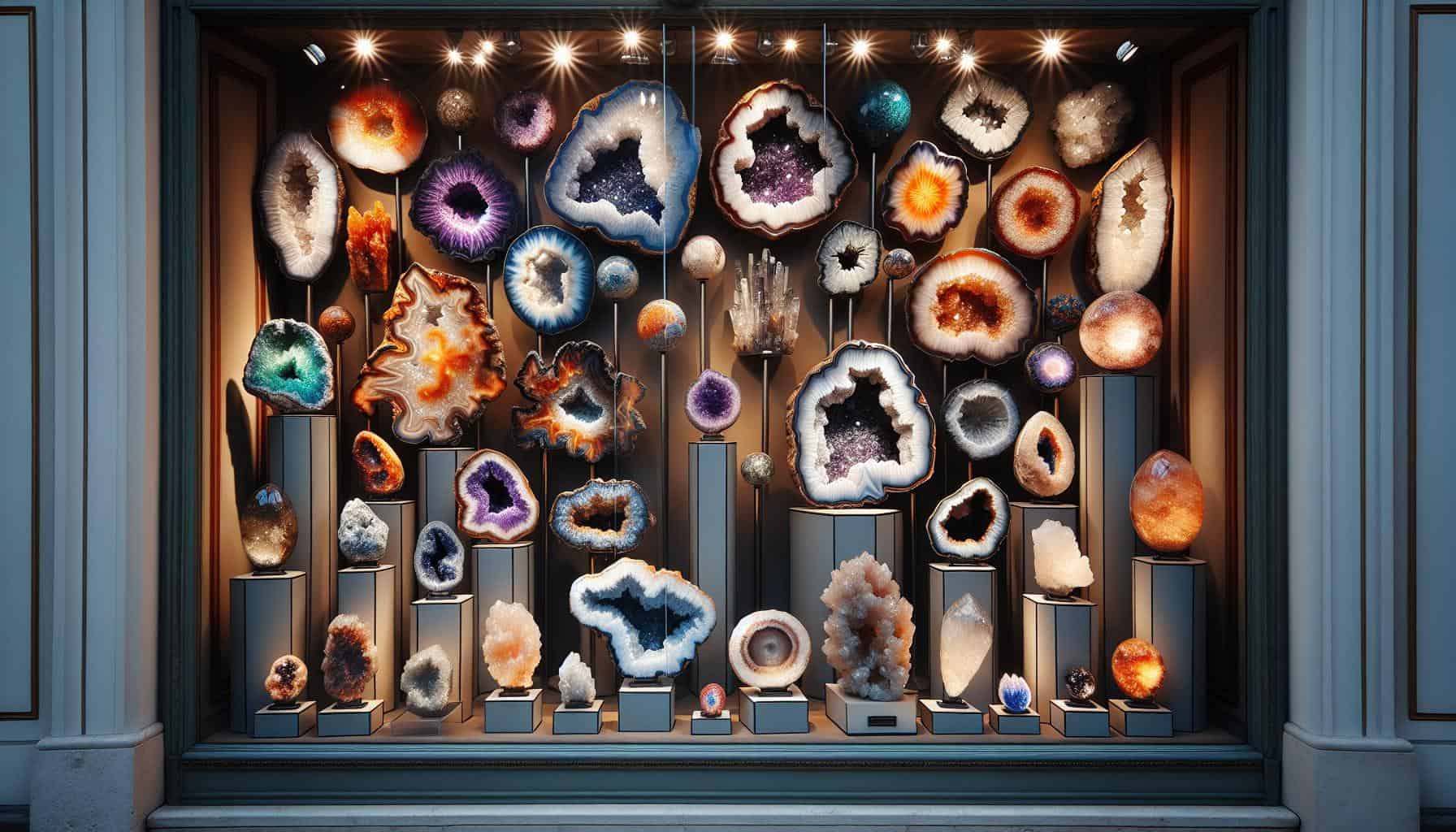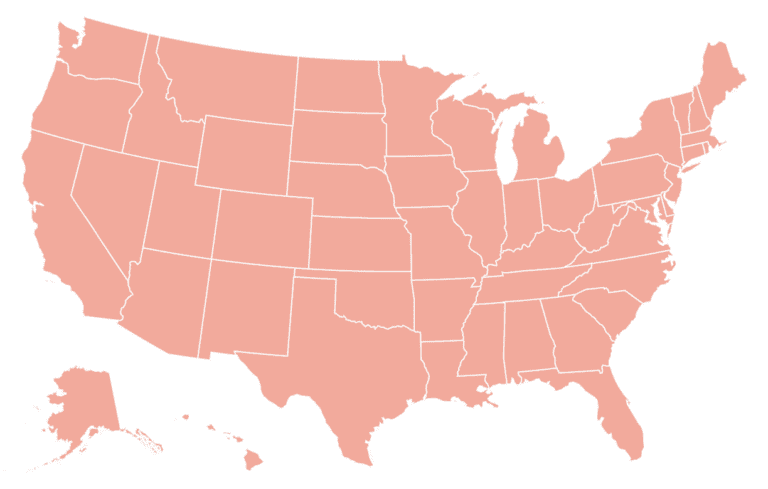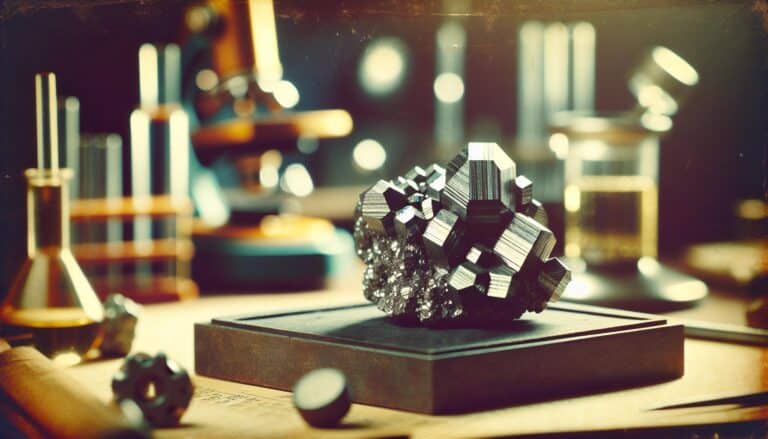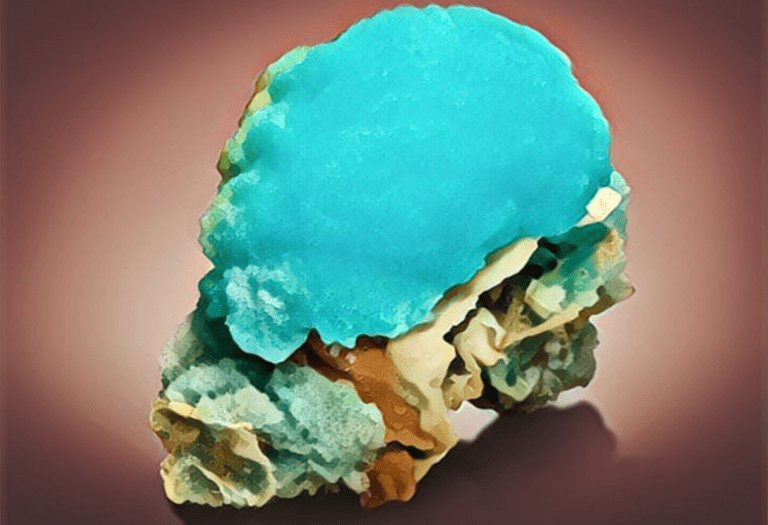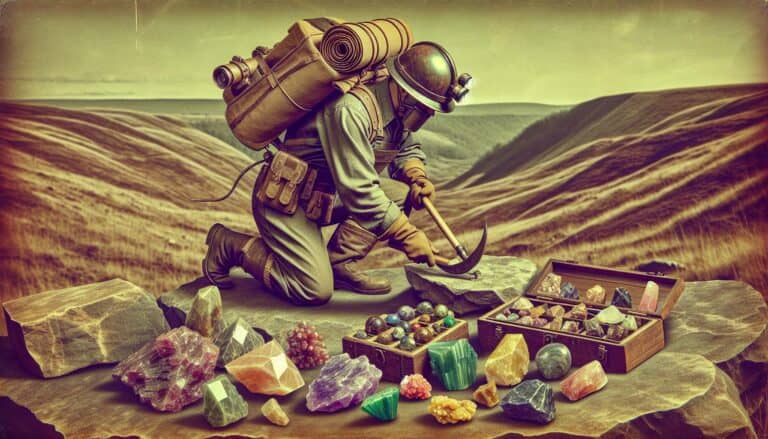Unearthing geodes and thundereggs is like discovering nature’s hidden treasures, but they don’t always look precious when you first find them.
That’s where cleaning comes into play. You’ll want to reveal their true beauty without damaging these delicate formations.
Cleaning geodes and thundereggs can be a simple process, but it’s crucial to do it right. You’re about to learn the best techniques to clean and preserve these natural wonders, ensuring they sparkle and shine for years to come.
Let’s get started on transforming your finds into spectacular showpieces.
To unveil the beauty of geodes, gently clean with mild detergent and water, avoiding harsh chemicals. Use soft brushes for delicate areas. Dry thoroughly to prevent damage. Proper cleaning reveals their stunning interiors, enhancing their value and appeal as natural treasures.
Why Clean Geodes and Thundereggs
When you discover a geode or thunderegg, it’s like finding a hidden gem – quite literally. But these natural treasures often don’t reveal their true magnificence until they’ve been properly cleaned.
Unearthed treasures like these frequently come covered in dirt, dust, and debris, obscuring the crystalline beauty within. It’s your job to carefully unveil that hidden splendor.
Cleaning geodes and thundereggs offers several benefits:
- Enhances aesthetic appeal: A thorough cleaning will allow the true colors and patterns within to captivate all who see them.
- Increases value: Whether you’re looking to sell your finds or simply want them to stand out in your collection, cleanliness can directly impact their perceived value.
- Prepares for further processing: If you plan on cutting or polishing your stones, a clean surface is necessary to work with.
After investing time and effort in locating these geological wonders, don’t settle for their rough exterior appearance. Implementing proper cleaning techniques is vital to ensuring they shine and display their unique characteristics.
By cleaning your finds, you’ll treat yourself to the full visual experience that nature intended.
With your geodes or thundereggs clean, you won’t just have a rock; you’ll have a captivating showpiece whose natural allure is effortlessly evident. Remember, each find has its own needs based on its individual composition and the materials clinging to it.
Implementing the precise method dedicated to the type of geode or thunderegg you have is crucial. Always opt for gentle cleaning solutions to avoid damaging these precious items.
Delicacy cannot be overstated, as you’ll want to maintain the integrity of each specimen for years to come.
Whether you’re a seasoned collector or a curious newcomer, the transformation from a dusty stone to a vibrant, alluring geode is a rewarding experience.
The proper cleaning allows each specimen to take center stage, reflecting both the light and the dedication poured into revealing its inner beauty.
Gathering the Necessary Materials
Before diving into the cleaning process, you’ll need to gather some essential materials. Proper preparation is critical to avoid any hiccups during cleaning. You’ll want to start by assembling the following:
- Protective gloves: to shield your hands from sharp edges and cleaning agents.
- Soft-bristled brush: crucial for gentle scrubbing that won’t scratch the geodes.
- Toothbrush: perfect for getting into small crevices.
- Mild detergent: a gentle soap helps remove stubborn dirt without harming the stone.
- Warm water: to soak and rinse your geodes and thundereggs.
- Plastic containers: for soaking and rinsing purposes.
- Soft cloth: for drying and polishing.
Safety goggles are also recommended to protect your eyes from any possible flying debris while scrubbing. Once you have these items, you’re ready to start the cleaning process.
It’s also wise to have clear work space designated for cleaning. This should be an area where you can comfortably handle the geodes and thundereggs without risking damage to other surfaces or the stones themselves.
For tougher stains and deposits, consider having:
- Vinegar or CLR (Calcium Lime Rust) remover: These can help dissolve heavier mineral deposits but use with caution.
- Plastic clippers or chisels: Sometimes, you might need mechanical assistance to remove larger pieces of matrix or concretions.
Remember, it’s imperative to match the cleaning technique and materials to the condition of your specimen. Using harsh chemicals or tools on delicate geodes can cause irreversible damage.
Stick to this checklist of materials to ensure a safe and effective cleaning process. With your materials at the ready, you’re all set to breathe new life into those earthy treasures.
Cleaning Precautions
When cleaning geodes and thundereggs, it’s crucial to take certain precautions to protect both yourself and these natural wonders. Safety should never be an afterthought as the process often involves handling potentially harmful chemicals and tools.
Always Wear Protective Gear: Start by donning your safety goggles and gloves. This isn’t just a suggestion; it’s a necessary step to prevent any accidental splashes of chemicals or dust particles from irritating your skin or eyes. Remember, your safety is paramount.
Be Mindful of the Chemicals: Some minerals can react negatively to harsh chemicals. Always research or consult with a professional before using anything stronger than mild detergent. If you’ve decided to use stronger cleaning agents like muriatic acid, ensure you’re in a well-ventilated area and consider using a respirator to avoid inhaling fumes.
Moderate Your Cleaning Approach: Thundereggs and geodes might look robust, but they’re often quite delicate. When scrubbing, apply gentle pressure to avoid scratching or damaging the surface. It’s better to repeat a mild cleaning process than to be overly aggressive and ruin your specimen. When dealing with cracks or crevices, use a toothbrush for more meticulous cleaning.
Avoid Thermal Shock: Sudden temperature changes can harm your geodes. Whether you’re cleaning with warm water or intending to dry them, always transition temperatures gradually. Don’t immerse a cold stone into hot water or vice versa as this can cause cracking or splitting.
Monitor Cleaning Time: Prolonged exposure to water can sometimes lead to the breakdown of less stable components within a geode. Limit soaking time and ensure you pat the stones dry with a soft cloth afterward.
- Check for pre-existing damage before cleaning to adjust your method accordingly
- Use plastic containers to avoid accidental breakage during the soaking process
- Re-evaluate the condition of your geode after each cleaning cycle to decide whether additional cleaning is necessary or if it’s time to stop
By observing these precautions, you’ll not only preserve the integrity of your geodes and thundereggs but also maintain a safe and effective cleaning environment.
Dry Cleaning Method
When your geode or thunderegg doesn’t require a deep clean, the Dry Cleaning Method is a reliable approach. This technique is especially beneficial if you’re dealing with specimens that are vulnerable to water damage. Begin by securing a soft-bristled brush; an old toothbrush often does the trick.
Firstly, ensure that you’re working in a well-ventilated area to disperse any fine dust generated during the process. Gently brush the surface of the geode or thunderegg to remove loose dirt and debris. Pay close attention to crevices where dust can easily accumulate. If necessary, you can use compressed air to blow dust out of hard-to-reach spots.
For stubborn stains or buildup, a wooden pick or dental tool can be employed with care. These tools allow you to delicately scrape off the contaminants without applying excessive force that could fracture the specimen. Remember, patience is key; work slowly to avoid causing any scratches or damage to its surface.
In some cases, a small amount of distilled water on a cotton swab can assist in the cleaning process. However, immediately dab the area dry with a lint-free cloth to prevent any moisture from lingering. It’s essential to ensure that the geode or thunderegg is completely dry before storing or displaying it.
While working with dry methods, routinely check for any signs of wear or damage. If the geode or thunderegg appears sensitive to the cleaning actions or if any new imperfections are noted, it’s wise to pause and reassess your technique.
Your aim should be to enhance your specimen’s natural beauty without causing any unintentional harm.
Throughout this process, it’s crucial to prioritize both the condition of the geode or thunderegg and your own safety. Remember the importance of protective gear, as even dry cleaning can produce dust particles that could irritate your eyes or respiratory system.
Keep these tips in mind to ensure your precious geodes and thundereggs are cleaned effectively while preserving their pristine condition.
Wet Cleaning Method
When you encounter tougher grime that dry brushing can’t handle, the wet cleaning method is your go-to solution. Begin by preparing a warm soapy solution. Typically, dish soap is gentle enough to clean your geodes and thundereggs without causing any damage. Submerge your stones in the soapy water and let them soak for several hours. This will loosen dirt and allow for easier cleaning.
After soaking, use a soft toothbrush or a nylon-bristle brush to gently scrub the surface of your geode or thunderegg. Be mindful to brush lightly to avoid scratches. Persistent stains may require multiple gentle scrubbings. Rinse the stone with cool, distilled water to remove any soap residue. Distilled water is preferred as it doesn’t contain minerals that can be deposited on the stones.
Once rinsed, pat your geodes dry with a soft cloth. If there are any water spots, a quick buff with a microfiber cloth will leave your stones shining. For particularly intricate geodes and thundereggs, you can use compressed air to remove water from hard-to-reach crevices.
Keep in mind, certain types of geodes should not be submerged. If you’re unsure about your specimen, test a small, inconspicuous area first, or consult a professional.
To maintain the natural luster of these geological treasures:
- Regularly dust off dirt and debris
- Use mild cleaning solutions
- Avoid harsh chemicals and brushes
While cleaning your geodes and thundereggs, it’s crucial to preserve their integrity. Always remember to handle them with care to maintain their natural beauty and structure.
Cleaning Solutions and Techniques
When you want to ensure your geodes and thundereggs are shining brightly, selecting the right cleaning solutions and techniques is critical. The key is balancing efficiency with gentleness to maintain the integrity of the stones.
DIY Cleaning Solutions
For non-porous geodes, a simple DIY solution can work wonders. Mix one part mild dish soap with two parts water for an effective yet gentle cleaning agent. If you’re tackling heavily stained areas, consider adding a tablespoon of household ammonia to a cup of water. Always perform a spot test first to ensure this solution won’t damage the specimen.
Specialized Cleaning Kits
Alternatively, specialized geode cleaning kits are available, which contain non-toxic, earth-friendly solutions designed specifically for mineral and rock cleaning. These kits often come with brushes and detailing tools, curated to avoid scratching soft stones.
Mechanical Cleaning Techniques
- Ultrasonic Cleaners: These devices use high-frequency sound waves to agitate a liquid, resulting in thorough cleaning of complex geode structures. They’re particularly useful for stones with lots of crevices.
- Tumbling: Suitable for durable geodes and thundereggs, tumbling them with grit can polish and remove stubborn dirt. However, this method requires patience as it can take several weeks to achieve the desired finish.
Safety Precautions to Consider
While exploring these various methods, safety should be your top priority. Always wear gloves when handling cleaning solutions, especially those containing ammonia. If you’re using mechanical devices, ensure you’re familiar with their operation and that you’ve taken all necessary safety measures.
Remember that some geodes and thundereggs may be more fragile than others, and it’s essential to adjust your cleaning techniques accordingly. Test your cleaning method on a small, inconspicuous area of the stone before proceeding with the entire specimen. This way, you protect the natural wonder and integrity of these geological treasures while revealing their true beauty.
Removing Stains and Scale Deposits
Stains and scale deposits may seem daunting but with the proper approach, they can often be removed to restore your geode or thunderegg’s natural beauty. Iron oxide stains, common in geodes, produce unsightly rust-colored blemishes. To tackle these, you’ll need a reducing agent such as Iron Out or a similar product. Create a mixture following the product’s guidelines and immerse your specimen for several hours to overnight.
Remember to ventilate your space when using chemical solutions, as they can release fumes that are harmful if inhaled in concentrated amounts. Always wear gloves and protective eyewear to prevent any skin or eye irritation.
Calcium deposits can present a different challenge. These white, crusty accumulations derive from evaporated hard water. A mild acid like white vinegar can be effective in dissolving these deposits. For more stubborn accumulations, use diluted muriatic acid with caution:
- Mix one part muriatic acid to four parts water.
- Submerge the geode or thunderegg for no more than a few minutes.
- Rinse thoroughly with water immediately after the bath.
Verify for any pitting or etching on your stone after the acid treatment, particularly if it’s composed of more sensitive minerals. Keeping an eye on the stone during the soak can prevent potential damage.
For organic stains such as algae or moss, a simple solution of bleach and water can be applied. Mix one part bleach to 10 parts water and gently scrub the affected area with a soft brush. It’s crucial to rinse the stone well after this treatment to eliminate any residue.
Incorporating these methods into your regular maintenance routine will help in keeping your geode or thunderegg looking pristine. Some stones might require repeated treatments or a combination of methods to completely remove heavy stains or scale. Careful attention to the stone’s response to each treatment will guide you in maintaining its structural integrity.
Drying and Preserving Them
After you’ve thoroughly cleaned your geodes or thundereggs, it’s imperative that they’re dried properly to prevent any water spots or the growth of mold. Begin by gently patting them dry with a soft cloth to remove excess water. Avoid using heat or direct sunlight which can cause cracking due to rapid temperature changes. Instead, place the geodes and thundereggs in a warm, well-ventilated area and let them air dry completely. This might take a few hours to a full day, depending on the size of the specimens.
Maintaining the sparkle in your geodes and thundereggs involves careful preservation. Once dry, consider applying a sealer to enhance and protect the natural luster of the stones. Options range from natural oils, like mineral oil, to commercial sealants designed specifically for rocks and minerals.
When applying any sealant:
- Use a soft brush or cloth to apply a thin layer.
- Allow it to penetrate the surface for a few minutes.
- Wipe away any excess to avoid a greasy film.
Remember that sealed specimens should be kept out of direct sunlight to prevent the sealer from breaking down over time. Additionally, storing your geodes and thundereggs in a display case or cabinet with relatively stable humidity and temperature will aid in preserving their condition.
Consistent care is also key to preservation. Dust the geodes and thundereggs regularly with a soft, dry brush. If fingerprints or dust accumulate over time, a simple wipe with a damp cloth followed by a thorough drying session will suffice.
Knowing how to properly care for your geodes and thundereggs ensures that they remain vibrant and intact for years to come. With the right drying and preserving techniques, you’ll enjoy the natural beauty of your stones without compromising their integrity.
Displaying Your Cleaned Geodes and Thundereggs
Once your geodes and thundereggs are cleaned and preserved, showcasing them properly is key to enhancing their natural beauty. Start by selecting an appropriate display area. You’ll want to choose a spot where they’re protected from excessive humidity and temperature fluctuations that could damage the stones.
There’s an array of display options available:
- Custom stands: Made specifically for holding geodes and thundereggs, these can provide a stable base and turn your stone into a true centerpiece.
- Shadow boxes or display cases: These not only add a level of elegance but also protect your specimens from dust and other potential environmental contaminants.
- Shelves: A simple and accessible option, shelves allow you to arrange and rearrange your collection easily.
Regardless of the display method, ensure each piece is secure to prevent it from tipping or falling. Mount putty or museum wax works wonders to keep your treasures steady without damaging them.
Lighting plays a crucial role in exhibiting the brilliance of geodes and thundereggs. Consider using LED spotlights or cabinet lighting to accentuate the unique features of each piece. However, avoid placing them in direct sunlight, as UV rays can fade the colors over time.
Here are a few things to remember when lighting your geodes and thundereggs:
- Use lights with adjustable brightness to control the intensity and enhance the stone’s appearance.
- Position the lights at different angles to highlight the depth and textures within the stone.
- Opt for lights that emit little to no heat to prevent potential thermal damage to your stones.
When laying out your collection, give each specimen enough space. This not only allows individual pieces to stand out but also creates a more impactful visual display. Additionally, consider adding labels with information such as the type of stone, origin, or any fascinating details about how you acquired or cleaned the piece.
Regular maintenance such as dusting and wiping will keep your display looking pristine. Use a soft-bristled brush or a microfiber cloth to gently remove any dust that accumulates over time without scratching the surfaces. Remember to handle your geodes and thundereggs with care, taking them off their display stands only when necessary to minimize the risk of chipping or cracking.
Conclusion: On Cleaning Geodes
You’ve mastered the art of cleaning geodes and thundereggs and now know the secrets to making them shine.
Showcasing your treasures effectively can make all the difference. Whether you opt for custom stands or atmospheric lighting, your stunning pieces will captivate all who see them. Just remember to protect them from direct sunlight and give them the occasional care they deserve. Your collection is not just a testament to your cleaning prowess but a display of nature’s artistry.
Keep up the good work and your geodes will continue to be the highlight of your space.

